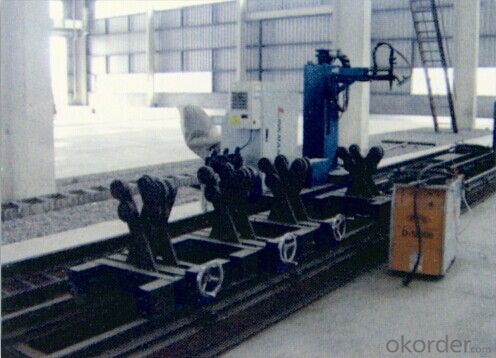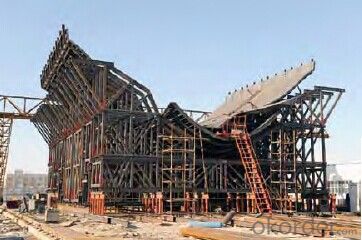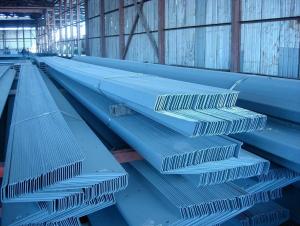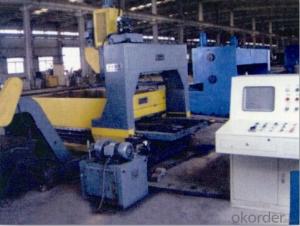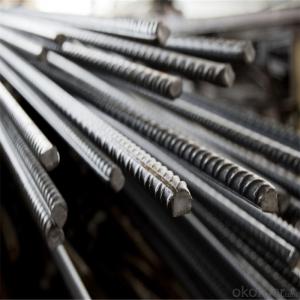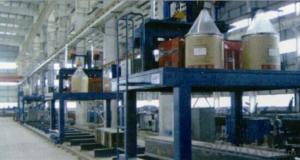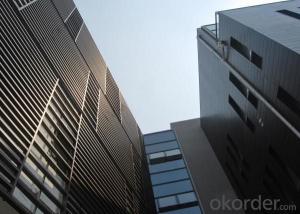Steel Structure Used in Construction
- Loading Port:
- China Main Port
- Payment Terms:
- TT OR LC
- Min Order Qty:
- -
- Supply Capability:
- -
OKorder Service Pledge
OKorder Financial Service
You Might Also Like
Steel Structure
Description:
1.Length of the welding withnot indication, full welding should be applied
2.Seam without indication is fillet weld, height is 0.75t
3.The cutting angle without indication, radius R=30
4.Cutting angle not specified should be
5.The diameter of the hole for the bolt if not specified, D=22

Project Reference:
For the Steel structure project of Upper part of external
piperack for air separation and gasifying facilities of
460,000 tons MTO (Methanol to Olefins) project in
Duolun, we provide about 4,500 tons steel structure. It
is a heavy chemical indusry of national energy project.
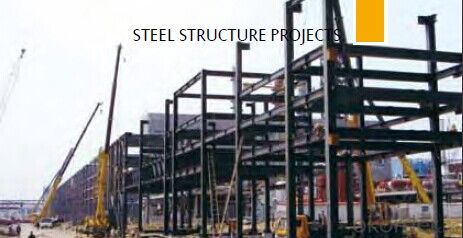
- Q: Can steel structures be designed for energy harvesting and renewable energy integration?
- Yes, steel structures can indeed be designed for energy harvesting and renewable energy integration. Steel is a versatile and durable material that can be incorporated into various renewable energy systems. One example is the integration of solar panels onto steel roofs or facades, allowing the structure to harness solar energy for electricity generation. Additionally, steel structures can be designed with built-in wind turbines to capture wind energy. These turbines can be installed on tall steel towers or incorporated into the design of the structure itself. Furthermore, steel structures can be designed to accommodate other energy harvesting technologies such as piezoelectric systems. Piezoelectric materials can convert mechanical stress or vibration into electrical energy. By incorporating these materials into the structure, the movement or vibrations caused by foot traffic, vehicles, or any other external force can be converted into usable electricity. Moreover, steel structures can also be designed to maximize energy efficiency. By incorporating energy-efficient design principles such as proper insulation, natural lighting, and ventilation systems, steel buildings can reduce their energy consumption and reliance on non-renewable energy sources. In conclusion, steel structures can be effectively designed for energy harvesting and renewable energy integration. Through the integration of solar panels, wind turbines, and other energy harvesting technologies, as well as the incorporation of energy-efficient design principles, steel structures can contribute to a more sustainable and renewable energy future.
- Q: What is the role of steel trusses in a structure?
- Steel trusses play a crucial role in providing structural support and stability to a building or structure. These trusses consist of interconnected steel members, usually in a triangular shape, that are designed to efficiently distribute the load and resist the forces acting on the structure. One of the primary functions of steel trusses is to bear and transfer the weight of the roof, floors, and other loads to the walls or columns of the structure. By distributing the load evenly, trusses help to prevent excessive stress concentration on any particular area, ensuring the overall structural integrity. Moreover, steel trusses are highly durable and have a high strength-to-weight ratio, making them ideal for large-span structures such as warehouses, factories, gymnasiums, and even bridges. Their strength allows them to withstand heavy loads and adverse weather conditions while maintaining their shape and stability over time. In addition to their load-bearing capabilities, steel trusses also offer design flexibility. They can be customized to suit various architectural styles and accommodate different roof shapes and configurations. This adaptability allows architects and engineers to create unique and aesthetically pleasing structures. Furthermore, steel trusses are known for their ease of installation and speed of construction. Prefabricated trusses can be manufactured off-site, minimizing construction time and reducing labor costs. This makes steel trusses a cost-effective solution for many construction projects. Overall, the role of steel trusses in a structure is to provide robust support, distribute loads efficiently, ensure structural stability, and allow for creative design possibilities. Their strength, durability, and versatility make them an essential component in modern construction, contributing to the safety and longevity of buildings and structures.
- Q: What are the common design considerations for steel structures in parking structures?
- Some common design considerations for steel structures in parking structures include factors such as load capacity, corrosion resistance, fire safety, durability, flexibility for future expansion or modifications, and cost-effectiveness. Additionally, considerations may also include the integration of proper lighting, ventilation, and drainage systems, as well as the optimization of space utilization and efficient traffic flow within the structure.
- Q: How are steel structures designed for retail storefronts?
- Steel structures for retail storefronts are typically designed to be durable, flexible, and visually appealing. The design process involves considering factors such as the desired layout, load-bearing requirements, aesthetic preferences, and local building codes. Steel is chosen for its strength, affordability, and ability to support large spans, allowing for open and inviting storefronts. The structures are designed to accommodate large windows, signage, and entrance features, while ensuring safety and stability. Overall, the design focuses on creating an attractive and functional space that meets the specific needs of retail businesses.
- Q: What are the considerations for designing steel staircases?
- When designing steel staircases, there are several key considerations to keep in mind. Firstly, structural integrity is crucial. The design must take into account the weight and load-bearing capacity of the staircase, ensuring it can support the anticipated traffic and any potential dynamic loads. Secondly, safety is paramount. The staircase should comply with building codes and regulations, incorporating features such as handrails, guardrails, and anti-slip treads to prevent accidents and provide a secure user experience. Thirdly, aesthetics and functionality should be balanced. The design should align with the overall architectural style and purpose of the building while also ensuring ease of use, comfort, and efficient space utilization. Furthermore, the fabrication and installation process should be considered, ensuring that the design is feasible and cost-effective. Collaboration with experienced professionals, such as structural engineers and fabricators, is essential to address these considerations and create a successful steel staircase design.
- Q: What are the meanings of I-beam BH300 x 200 x 6 x 8 in steel structures?
- The ratio of the area of a longitudinal force (tension or pressure) to the effective area of a member (the axial compression member is a full cross section). The reinforcement ratio and the reinforcement ratio of the compression bar are calculated respectively. Formula: P =A (s) /bh (0). Here is the angle brackets below.Type: A (s) is the cross-sectional area of the longitudinal reinforcement in tension or compression zone; B is the width of the rectangular section; H (0) is the effective height of the cross section. The reinforcement ratio is a parameter that reflects the number of reinforcement.The minimum reinforcement rate is that, when the beam reinforcement ratio is very small, the beam tension zone after cracking, the steel stress tends to yield strength, the reinforcement rate is called the minimum reinforcement ratio (min). The minimum reinforcement ratio is determined according to the principle that the ultimate flexural capacity M (U) of the member section is equal to the bending moment M (CR) equal to the tensile moment of the concrete member under tension.
- Q: How are steel structures designed for flood loads?
- Steel structures are designed for flood loads by incorporating various measures to withstand the forces exerted by floodwaters. This includes elevating the structure above the flood level, designing robust foundations to resist buoyancy and lateral forces, and utilizing corrosion-resistant materials for long-term durability. Additionally, openings such as windows and doors are designed to be flood-resistant or equipped with flood barriers to prevent water infiltration. Overall, the design process involves considering the anticipated flood loads and implementing specific engineering solutions to ensure the structure's safety and resilience during flood events.
- Q: What are the factors to consider for steel structure foundations on soft soils?
- When examining steel structure foundations on soft soils, there are various factors that necessitate consideration: 1. Soil investigation: To comprehend the soil's characteristics and ascertain its load-bearing capacity, a thorough soil investigation is imperative. This entails evaluating the soil's strength, compaction, settlement characteristics, and potential for liquefaction. 2. Bearing capacity: The soil's bearing capacity is a critical aspect of steel structure foundation design. It denotes the maximum load that the soil can endure without excessive settlement or failure. Soft soils typically possess lower bearing capacity, which may necessitate additional reinforcement or alternative foundation solutions. 3. Settlement: Soft soils are susceptible to settlement due to their weak strength and high compressibility. The possibility of settlement must be carefully assessed to ensure that the foundation can withstand anticipated loads and prevent differential settlement, which can lead to structural problems. 4. Ground improvement: In instances where the soil's bearing capacity is inadequate, ground improvement techniques can be employed to enhance the soil's properties. These techniques might involve soil stabilization, compaction, or the utilization of geosynthetic materials to fortify the ground. 5. Foundation type: The selection of foundation type is pivotal when dealing with soft soils. Common options for steel structures include shallow foundations (like spread footings or mat foundations) or deep foundations (such as driven piles or drilled shafts). The choice depends on factors such as soil conditions, building loads, and the cost-effectiveness of each option. 6. Structural design: The structural design of the steel foundation must account for the expected loads, the structure's geometry, and the soil conditions. The design should guarantee that the foundation can distribute the loads evenly and prevent excessive stress concentrations that could result in failure. 7. Environmental factors: Soft soils often coincide with environmental factors like high water tables, seismic activity, or the presence of expansive clay. These factors should be taken into consideration during the design process to ensure that the foundation can accommodate any potential environmental impacts. 8. Construction considerations: Construction techniques and sequencing should be planned to minimize disturbance to the soft soil during foundation installation. Special precautions might be necessary to prevent soil erosion, provide temporary support, or ensure proper compaction of the soil around the foundation. By meticulously considering these factors, engineers can design steel structure foundations that are suitable for soft soils, guaranteeing the long-term stability and safety of the structure.
- Q: How are steel structures erected on-site?
- Steel structures are typically erected on-site through a process that involves several steps. First, the site is prepared by leveling the ground and setting up the necessary foundations. Then, the steel components are delivered to the site and organized according to the construction plan. Next, the steel beams, columns, and other elements are lifted and secured into place using cranes and other heavy machinery. Connections between the steel pieces are made using bolts, welding, or a combination of both. Finally, the structure is inspected for safety and stability before any additional finishing touches are added.
- Q: How does steel perform in terms of wind resistance?
- Steel performs very well in terms of wind resistance. Its high strength and rigidity make it a suitable material for constructing buildings and structures that can withstand strong winds. Steel structures are designed to distribute wind loads evenly, reducing the risk of damage or collapse. Additionally, the flexibility of steel allows it to bend under high winds instead of breaking, which further enhances its resilience against wind forces.
Send your message to us
Steel Structure Used in Construction
- Loading Port:
- China Main Port
- Payment Terms:
- TT OR LC
- Min Order Qty:
- -
- Supply Capability:
- -
OKorder Service Pledge
OKorder Financial Service
Similar products
Hot products
Hot Searches
Related keywords


